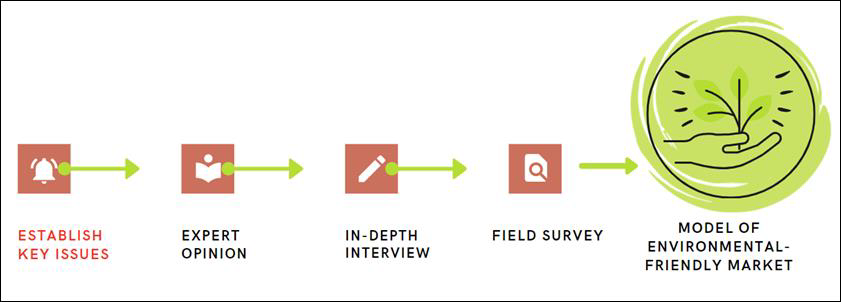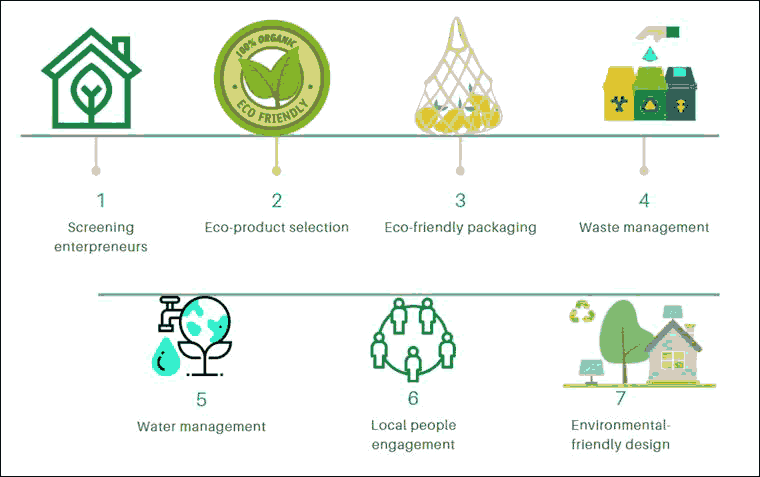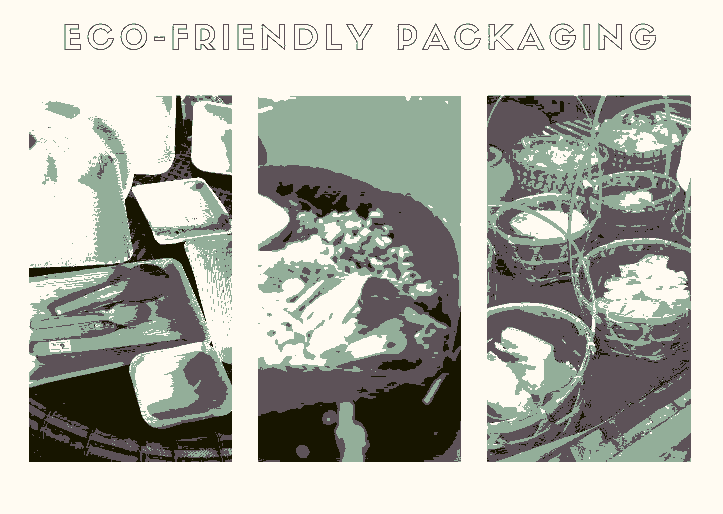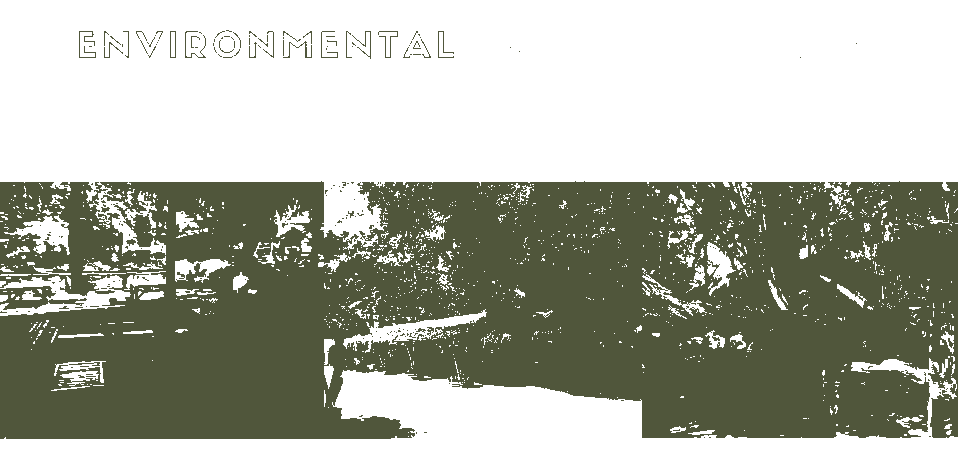Research Article: 2021 Vol: 24 Issue: 1S
Model of Environmental-Friendly Market for Community-Based Tourism Enterprises in Phatthalung Province, Thailand
Tatsanawalai Utarasakul, Suan Sunandha Rajabhat University
Srisuwan Kasemsawat, Suan Sunandha Rajabhat University
Keywords
Environmental-Friendly Market, Community Market, Green Market, Community-Based Tourism, Thailand
Abstract
This research aimed to establish key issues contributing a model of Environmental-friendly market for community-based tourism enterprises in Phatthalung Province, Thailand. The study areas were selected from the best practices of community markets. The model was developed during March - September 2020 by generated the criteria, expert opinion, in-depth interviews, and field survey. The results revealed that model of environmental-friendly market have been identified into 7 key issues. These include 1) local and responsible entrepreneurs 2) eco-products 3) eco-friendly packaging 4) waste management 5) water management 6) activities involving cooperate local people engagement, and 7) environmental-friendly design. To achieved the model of environmental-friendly market, market’s owner is playing a vital role to initiated the practical and successful community-based tourism enterprises by integrated the local wisdom and the uniqueness of the community to promoted the content by sharing in social media.
Introduction
Sustainability has come to the forefront of global issues. The World Commission on Environment and Development (WCED) issued the first report on sustainability, entitled ‘‘Our Common Future’’ which was supported by several international organizations (WTTC/UNCED, 1992; WCED, 1987). The WCED defined sustainable development as development that ‘‘meets the needs of the present without compromising the ability of future generations to meet their own needs’’ (WCED, 1987). To achieve sustainable development goal is to combine the three pillars in every sectors, especially in tourism. The conception of sustainable tourism development was indicated by UNWTO that “tourism that takes full account of its current and future economic, social and environmental impacts, addressing the needs of visitors, the industry, the environment and host communities” (UNWTO, 2021). Best Practice of sustainable tourism is intended to be a facilitating tool for community businesses enterprises to help adopt and apply specific actions that allow them to carry out and manage sustainable development (Dodds, 2021). An increasing number of enterprises have been adopting environmental sustainability policies by accepting their share of the responsibility for not harming the environment. Environmental sustainability is defined as a management approach to protect the environment and developing profit-generating strategies for business (Kotler & Armstrong, 2016). The relationship between the environment and marketing activities was first evaluated in the early 1970s. Its main purpose was, and indeed remains, to include environmental principles in marketing processes, to identify environmentally friendly consumers who want to buy environmentally friendly products, and to make best efforts to create an ethos of recycling in order to direct industrial societies towards adopting modes of behavior that do not ultimately result in any harm to the environment (Özt?rk, 2020). Thus, the concept of community-based tourism village development is generally the concept of development with the tourism sector as a pioneer with village priority scale through community participation in local economic development that empowers communities with the support of infrastructure and institutional development (Arintoko et al., 2020). The development of community-based tourism is often marred by the host communities’s ability to meaningfully and fully participate in tourism initiatives aimed at their development (Yanes et al., 2019) and practitioners have recognized community-based tourism to be a model of locally operated tourism that is owned and/or managed by host communities with the sole purpose of the accrual of positive benefits for the broader community (Dangi & Jamal, 2016). Therefore, Community-based Tourism’s ability to stimulate an entrepreneurial culture that leads to the creation of employment, income generation, skills development and ultimately the empowerment of the local population (Setokoe, 2020).
In Thailand, Community Development Department under the Ministry of Interior stimulated local enterprise’s economy throughout the country by launched model of Inno-live development which is related with local products and tourism activities since 2001. By focusing on selling products to generate additional income to the community by bringing charm, wisdom, way of life, culture, and creativity to convert into income. These including 8 identity of food, clothing, residence, traditions, languages, occupations, beliefs and local arts.
Phatthalung Province is located 846 kilometers from Bangkok, on the east coast of Malaya in the southern part of Thailand. Phatthalung has various types of significant and various natural resource from the mountain, agricultural, forest and wetland. Banthat Mountain’s the origin of many streams. The terrain is characterized by mountains and highlands to the west which is surround with numerous prominent caves, beautiful natural hot springs. The east side is plain to Songkhla Lake, suitable for agricultural and fishing. Especially, Talae Noi was designated as the first international wetlands of Thailand. For this reason, Phatthalung Province has develop provincial plan on the growth and prosperity from the agricultural-cultural based, advantageous wisdom, sustainable ecotourism and lead to the promotion of the distribution of One Tambon One Product (OTOP) community products in accordance with the context of tourist attractions, resources and communities (Phatthalung, 2019).
Examples of well-known provincial products such as Sung Yod rice (Oryza sativa L.), Krajood (Sedge or Lapironia articulate Domin) handwoven products, and coconut shell caving can also be applied wisdom and way of life as a form of tourism development. To achieve tourism value creation in terms of food, dress, residence, traditions, languages, occupations, beliefs, local arts to Phatthalung Province supportively. Identity of the community presented as a form of community merchandising during the weekend. Environmental-friendly market continuously generates income for the community and being as a model of representative learning center of Phatthalung Kwan Jai Bamboo Garden Market and Tai Nod Market.
Tai Nod Market launched in 2015 as a green folk market that generates income for the community besides bring happiness and friendship back to the local. The market allows villagers in the area to bring non-toxic products along with local food to sell include fresh vegetables, fresh fruits, local food, and local snacks that are distinctiveness products. Including unique handmade products which is perfect harmonize with the way of life of the southern people. The pattern of this market focuses on using natural materials to adapt to modern design as well as allowing villagers to participate in the creation of containers for products as well as eco packaging and reducing foam and plastic. As well as, established waste management models, water, energy, and the participation of entrepreneurs.
Kwan Jai Bamboo Garden Market or Pa Phai (in Thai means Bamboo) Sang Suk Market start operations since 2017, located in the bamboo garden. An area was originally a plantation garden of bamboo species as a learning center about bamboo. Every Saturday and Sunday, there will be an open space to make a market in the midst of nature. To allow local vendors to sell food, beverages, desserts, souvenirs, as well as local products of Phatthalung Province, to bring ideas to create a space of happiness for the local people and became important tourist attraction of Phatthalung Province (Tourism Thailand, 2020). There is also an area to promote local culture, including display of handicrafts, artifacts, handicrafts made from local materials, including bamboo, Krajood handicrafts, Manora beads, weaving and natural dyeing (Tourism Thailand, 2020).
The uniqueness of the community market appears as concrete of Phatthalung Province in both the conservation of the local cultural way along with the concept of using natural materials, waste utilization, and environmental-friendly design in harmony with nature. Therefore, the objective of this research is to establish key issues of a model of an environmental-friendly community-based tourism with a focus on the green market that sells products from community enterprises as a model for managing the community market spread through altered areas of Thailand.
Material and Methods
Qualitative methodology was applied in this research. Data collection methods consisted of 1) In-depth interviews, market owners and key informants, i.e., merchant operators involved in environmental management of the market 2) Selection of experts with expertise in environmental management and eco-friendly consumption to provide recommendations for the model of the environmental-friendly community market. 3) Field survey of environmental management. The study period from March - September 2020. Conceptual framework as shown in Figure 1.
Based on the 7 key issues of the evaluation criteria, in-depth interviews with both of the market founder and entrepreneurs including with field survey analysis can be summarized as a successful model of environmental-friendly market for community-based tourism.
Results and Discussion
The criteria for model of environmental –friendly market consist of 7 aspects as shown in Figure 2.
Figure 2: Key Issues For Sustainability Approaches of Green Community Market In Phatthalung Province
The results revealed that criteria of model of environmentally friendly community market for community-based tourism enterprise have been identified into 7 key issues. These include 1) Screening local and responsible entrepreneurs 2) Selecting eco-products policy 3) Encourage eco-friendly packaging 4) Proper waste management 5) Appropriate water management 6) Local people engagement 7) Environmentally friendly design. Detail and approaches of each issues are shown in Table 1.
| Table 1 Key Issues of Environmental-Friendly Market Model for Community-Based Tourism |
||
|---|---|---|
| No. | Key issues | Approaches |
| 1 | Screening local and responsible entrepreneurs | ? Screen local and responsible entrepreneurs that promote and carry on local wisdoms, sufficiency economy and community welfare and dress in local fabrics. |
| ? Create local engagement system for entrepreneurs to feel as being a part of the market such as cleaning the place together, establish committee to organize activities with real participation. | ||
| ? Sell local products of the province, seasonal product, organic, MSG-free and safe to consumers. This led to the change in eating habits, reducing sweet, salty and unnecessary additives. | ||
| 2 | Selecting eco-products policy | Product selection policy |
| ? Select local or seasonal fruits and vegetables. Use organic fertilizers according to nature principles and support sustainable food production of the community. | ||
| ? Soft drinks are not allowed. | ||
| ? Basketry products, handicrafts and art must be produced by themselves or local community. | ||
| 3 | Encourage eco-friendly packaging (Figure 3) | ? Do not use containers made of foam, single use plastic, staples is also forbidden. |
| ? Use the stalk of coconut stalks. | ||
| ? Do not use a toothpick instead of a stick. | ||
| ? Use natural food utensils such as a bamboo spout for a drink, natural materials such as coconut shells, lotus leaves, banana leaves, pandan leaves, coconut leaves, banana rope, paper bags, hemp rope, etc., as a food container, use packaging made from natural materials. | ||
| ? Avoid using plastic bags. Develop guidelines for using baskets, paper bags, and cloth bags. In case of the food contain water, may allow plastic bags as necessary. | ||
| 4 | Proper waste management | Waste separation |
| ? Generate waste deposit site at each shop. All retail stores are required to provide garbage bags to accommodate food waste. | ||
| ? Classify waste such as food waste, bamboo containers, food contaminated containers to be managed systematically. | ||
| Organic waste management | ||
| ? Wastes from various wood materials used as an alternative energy to wood charcoal and in the production of wood vinegar to repel insects in the vegetable garden planted in the market area. | ||
| ? Organic waste from vegetable scraps, food scraps, leaf utensils, etc. are used to make compost for the benefit of trees and vegetables grown in the market area to sell as organic vegetables to consumers. | ||
| ? Leaf litter is managed by covering the base of the tree Bamboo to keep the soil moist in order to educe the evaporation of water at the base of the tree. | ||
| Bamboo wood waste management | ||
| ? The bamboo spout that sells various kinds of beverage in the market has arranged for a special disposal to be used for example, in making handicrafts, wickerwork from bamboo, and interior decoration in various shops to harmonize by nature. | ||
| ? Some of them are burned in an oven to make charcoal. | ||
| Recycling waste management Paper plastic type | ||
| ? Some foods are inconvenient to use containers made from natural materials, so the market allows some products to still use plastic bags or plastic drinking bottles and bring to the recycle process. | ||
| ? The market has set up different types of waste collection points across the market so that it is convenient and easy for buyers to dispose of the right category and can be sold as extra income. | ||
| General and food-stained waste management | ||
| ? All stores must provide garbage bags to support food waste, clearly classified for ease of consumers and ease of operation, take out the waste from the market area for disposal prepared by the local government | ||
| Handling of used oil from cooking | ||
| ? Ask for cooperation with entrepreneurs who sell food that use oil to take into account the nutrition of consumers and arrange to have a survey or to inspect. | ||
| ? For used oil, the shop operates the collection and returns to be handled outside the market area. | ||
| 5 | Appropriate water management | Water |
| ? Use water from natural sources. There is an initial treatment before being used in the household or use tap water | ||
| Effluent | ||
| ? There is a central container wash point with grease trap before releasing to the ground and flowing through the basement into public canals. | ||
| 6 | Local people engagement | ? Organize a space showing community and youth activities such as the Manorah, youth music bands. |
| ? Art exhibitions by local artists in various fields. There is a wide variety of folk toys, displayed or sold in the market. | ||
| ? Provide a neighborhood area for people coming to the market. There is a donation box, parking fee. There are officers to service about traffic, take care of the cars and facilitate the service users to cross roads. | ||
| ? Provide clean toilets for travelers to use within the market area. | ||
| 7 | Environmental-friendly design | ? Shop decoration or shop area emphasize the use of natural materials such as krajood, wood, cloth. Do not use vinyl or non-degradable signs. |
| (Figure 4) | ? Cover the shop with banana leaves, other leaves or a blanket that blends with nature. | |
| ? Allocation of space in harmony with the shady trees. | ||
Conclusion
Considering the main components of which are environmentally friendly consistent with the research in terms of creative tourism activities (Kongrod, 2018), tourists have the highest level of demand for local food tourism activities, followed by local handicrafts, safe and unique local food. It is an attraction for tourists to come to buy food, local arts and crafts in the market of community enterprises. This is matched with the guidelines for the management of walking street activities in Nan, Nan Province (Kaewpong & Utarsakul, 2020), which found that environmental factors in the field of food waste and waste is the first priority should be handled properly. With recommendations for tourists to participate in waste management should start from reduce the amount of food waste left. On the part of the stakeholders should jointly lay out the guidelines for the utilization of food waste. Including establishing cooperation in determining waste management practices at merchant groups, along with the market management policy in selecting responsible entrepreneurs and products, as well as reducing difficult compostable waste from the source.
Additionally, to achieved the model of environmental-friendly market, the market’s owner is playing a vital role to initiated the practical and successful community-based tourism enterprises by integrated the local wisdom and the uniqueness of the community to promoted the content by sharing in social media. Dynamic activities for learning way of life the local people is also important to keep return tourist visit which can also inspired new tourist and created both income and sustainable living to community.
Recommendations
1) The use of environmentally friendly cleaning products should be encouraged to rinse the toilet and clean the place. To reduce the contamination of chemicals to the surrounding area and install an efficient grease trap.
2) Promote the maximum utilization of organic waste as it is the type of waste generated the most from food distribution activities. Which, can be used to make concrete compost materials or encourage buyers to take part in composting activities by themselves.
3) Promoting the reduction tough compostable packaging. As well as providing equipment for the manufacture of natural materials in the market by training buyers to be able to produce or sold at an affordable price. To enhance the buyer aware and minimize the use of packaging.
4) Entrepreneurs can attempt alternative technology to reduce the use of single-use plastic packaging by application. Consumers can reuse their own packaging and earn points by reducing packaging in conjunction with a sustainable consumption.
Acknowledgement
This research was funded by Thailand Science Research and Innovation (TSRI) for the fiscal year 2020, we would like to thank Mrs. Khwan Jai, the owner of Suan Phai Kwan Jai Market and Mr. Jutaporn Sotthiyothin, founder of Tai Nod Market as well as all entrepreneur’s operators and tourists who kindly provide information. Corresponding author’s email address is tatsanawalai.ut@ssru.ac.th.
References
- Arintoko, A., Ahmad, A.A., Gunawan, D.S., & Supadi, S. (2020). Community based tourism village development strategies: A case of Borobudur tourism village area, Indonesia. Geo Journal of Tourism and Geosites, 29(2), 398–413. https://doi.org/10.30892/gtg.29202-477
- Dangi, T.B., & Jamal, T. (2016). An integrated approach to sustainable community-based tourism. Sustainability, 8(5), 475-507. https://doi.org/10.3390/su8050475
- DODDS, R. (2021). Sustaining tourism. https://sustainabletourism.net/case-studies/reports/green-events/.
- Kaewpong, W., & Utarasakul, T. (2020). Impact of environmental capital factors, social and cultural capital factors, and economic capital factors to walking street activity: A case study of nan walking street, nan province. Built Environment Inquiry Journal (BEI), 19(3), 76-96. https://doi.org/10.14456/bei.2020.16.
- Kongrod, J. (2018). Behavior and demands of tourists toward creative tourism of khlong pa payom and khlong ta nar basin communities, pattalung province. Research report. Retrieved on Nov 28, 2020 from http://rms.rdi.tsu.ac.th:82/abc/files/report020191203134832.pdf
- Kotler, P., & Armstrong, G. (2016). Principles of marketing. Essex: Pearson.
- Öztürk, R. (2020). Green marketing. In current and historical debates in social sciences field studies and analysis. Retrieved on 10 Feb, 2021. https://www.researchgate.net/publication/348649689.
- Phatthalung. (2018). Phatthalung province. Retrieved on October 2019 from http://www.phatthalung.go.th/old/paper2.pdf
- Setokoe, T.J. (2020). Community-based tourism: A panacea for community development in Nqileni village, Eastern cape, South Africa. Geo Journal of Tourism and Geosites, 34(1), 28–32. https://doi.org/10.30892/gtg.34104-615
- Tai Node Market. (2020). Tai node market. E-book Journal for enhance agrotoruism and cultural conservation Tai Node Market, Kuan Kanun, Phatthalung. Retrieved on Nov 25, 2020 from https://pubhtml5.com/adsj/hqla [in Thai]
- Tourism Thailand. (2020). 7 Greens Suan Fai Kwan Jai. Retrieved on Nov 20, 2020 from https://7greens.tourismthailand.org/green-story
- UNWTO. 2021. Sustainable development. Retrieved on Jan 20, 2021 from https://www.unwto.org/sustainable-development
- World Commission on Environment & Development (WCED). (1987). Our common future. Oxford, UK: Oxford University Press
- World Travel & Tourism Council (WTTC)/UNCED. (1992). Agenda 21: Adoption of agreements on environment & development. Rio de Janeiro, Brazil: UNCED.
- Yanes, A., Zielinski, S., Diaz Cano, M., & Kim, S.I. (2019). Community-based tourism in developing countries: A framework for policy evaluation. Sustainability, 11(9), 2506. https://doi.org/10.3390/su11092506



